Back in 1966, The Beatles were in the middle of a crisis. Touring became unbearable. The band couldn’t stand the travelling, the complicated itineraries and all that screaming at concerts anymore. They got tired of not being able to even hear themselves at the show so they could improve their live performances.
“We could send out four waxworks … and that would satisfy the crowds,” John Lennon said. “Beatles concerts are nothing to do with music anymore. They’re just bloody tribal rites.” They were in the middle of a tour. Playing in Japan, in front of a polite, silent audience, they realised how awful they actually sound live. Weeks later they came to the United States – by the time the infamous quote by Lennon “The Beatles are more popular than Jesus” was said, which had a very unpopular reaction from the American public –, and that was it for The Beatles. They’ve had enough.
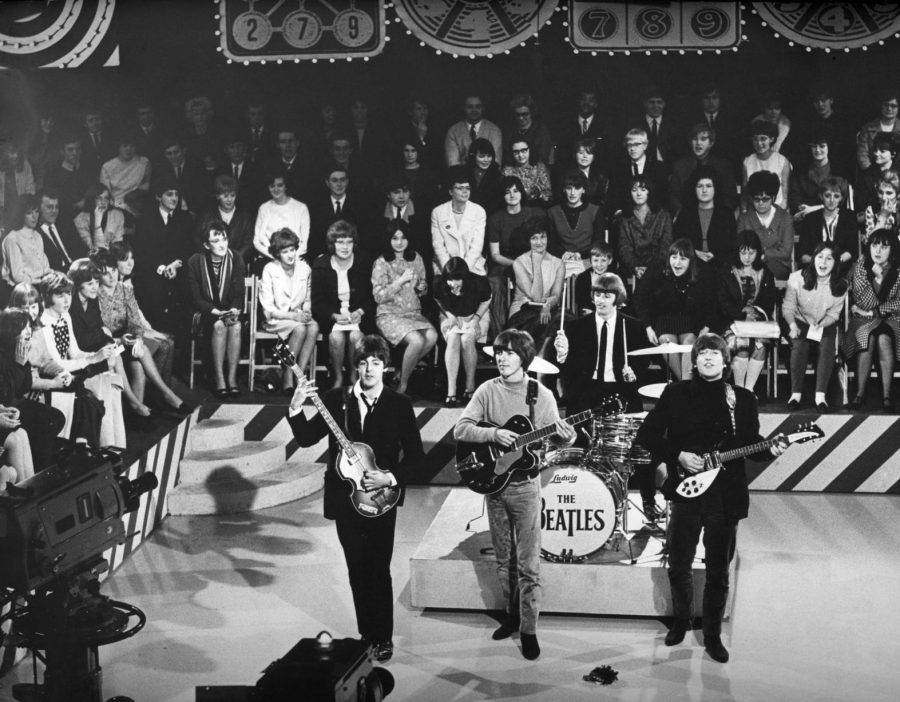
There were rumours of the band breaking up. Well, at least George Harrison, who was 23 years old at the time, didn’t want to be a part of the band anymore. But Brian Epstein, the manager, convinced him to stay, promising that the band wouldn’t be touring anymore.
They all agreed on taking a three-months break. Harrison travelled to India to study the sitar with master Ravi Shankar. Paul McCartney stayed home collaborating with “the fifth Beatle” George Martin on the soundtrack of the film ‘The Family Way,’ John Lennon dedicated to acting and attending art showings – where he met Yoko Ono – and Ringo Starr passed the time with his family.
‘Sgt. Pepper’s Lonely Hearts Club Band,’ an album for Liverpool
In November 1966, when flying back to London from Kenya, McCartney had an idea of for a song with an Edwardian-era military band involved, which eventually evolved into the ‘Sgt. Pepper’ concept. When telling the idea to Beatles tour manager Mal Evans, he invented the full name of the ‘Sgt. Pepper’ album, based on names of bands surging in San Francisco, like Big Brother and the Holding Company, among others. The idea was put aside for some time, as the band would begin recording new music.
For a long time, McCartney and Lennon had entertained the idea of writing an album about their Liverpool childhood. That’s how “Strawberry Fields Forever” and “Penny Lane” were born. The first one is a psychedelic alienation inspired by the Salvation Army children’s home, located near Lennon’s aunt Mimi’s house in Woolton, where he used to play. “Penny Lane” is the name of a street near Lennon’s childhood home. Also, McCartney and Lennon would meet at Penny Lane junction to catch a bus into the centre of the city.
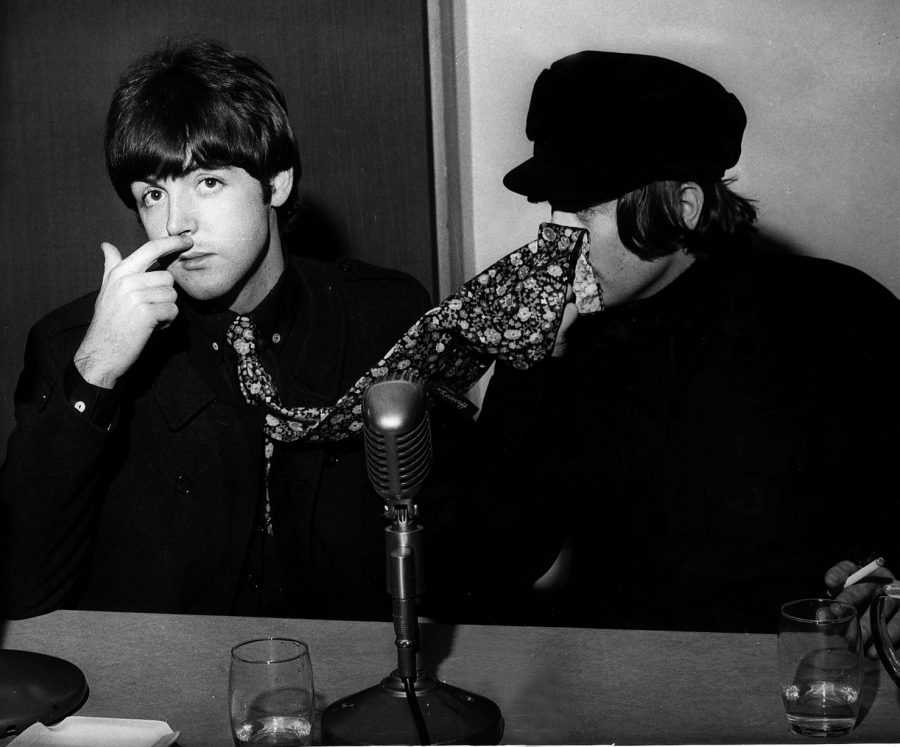
Both songs were recorded in November 1966 and intended to be the first recordings of the new album, but the record company EMI demanded they be released as a double-A-side single instead since it had been months since The Beatles had released any single.
McCartney also wrote a song about his routine as a teenager, in which he would run along Forthlin Road from his house in Allerton to catch the Corporation 86 bus for half an hour until getting to the Liverpool Institute on Mount Street, where he and Harrison went to school. The ritual was later recorded in the song “A Day in the Life.”
An alter ego of The Beatles that brought one of the most revolutionaries albums ever
By February 1967, the new album was almost done, including “Sgt. Pepper’s Lonely Hearts Club Band as a song McCartney wrote. But one day, he suggested the idea of the Beatles recording an entire album that would represent a performance by a fictional band, bringing to life Sgt. Pepper.
Now the Beatles left the mop top look behind, grew moustaches and started wearing military outfits. The reboot was an alter ego group that would give the band the chance to experiment with new concepts and technologies, and develop ideas left behind during the recording of ‘Revolver.’
These ideas were mostly really experimental, and as the band knew the would not have to perform the tracks live, they went all the way, even recording with a 40-piece orchestra.
Producer Martin and engineer Geoff Emerick applied innovative recording techniques, such as ADT (Artificial Double-Tracking), which is using tape delay to create a delayed copy of an audio signal, that combined with the original enhances the sound of voices or instruments. This technique was already used in ‘Revolver.’
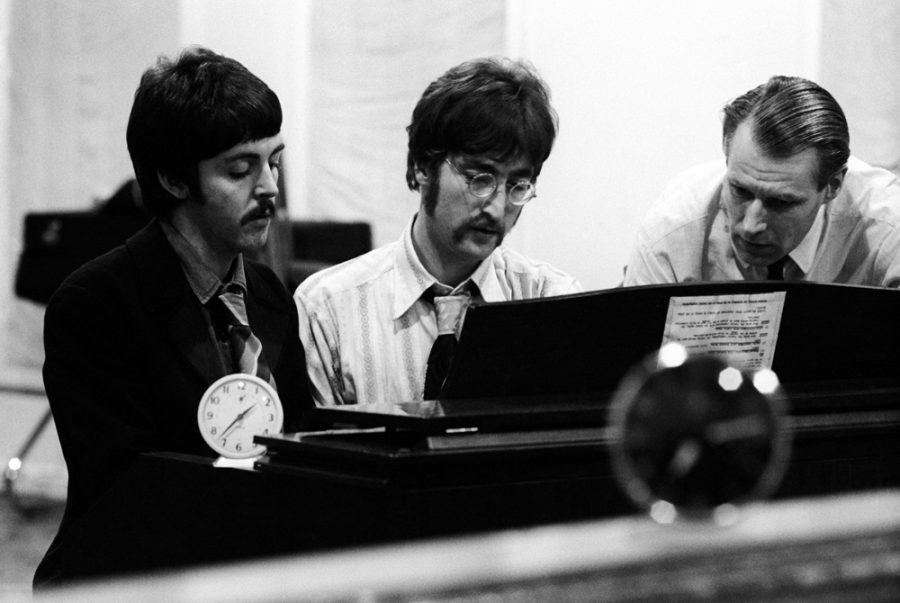
They used DI (Direct Injection) for the first time ever on this album, which consists of plugging in the instruments directly into an analogue recorder.
The so-called ‘Bouncing Down’ was also used for the first time, recording 4 different tracks and pass them on into a single channel in a new tape, so the other three channels were freed up. Songs like “Getting Better” got the ‘Bouncing Down’ technique applied up to three times, economising the channels and getting a completely different texture in the song. A total innovation for the time.
Of course, such a revolutionary album in composition and recording couldn’t get an artwork any less revolutionary. Michael Cooper took the iconic picture realised by pop artist Peter Blake.
Another historical contribution from The Beatles: it was the first time in history that an album included the lyrics of the songs on the back cover. It also included fun and colourful cardboard cutouts, as well as pictures related to the concept of the album.
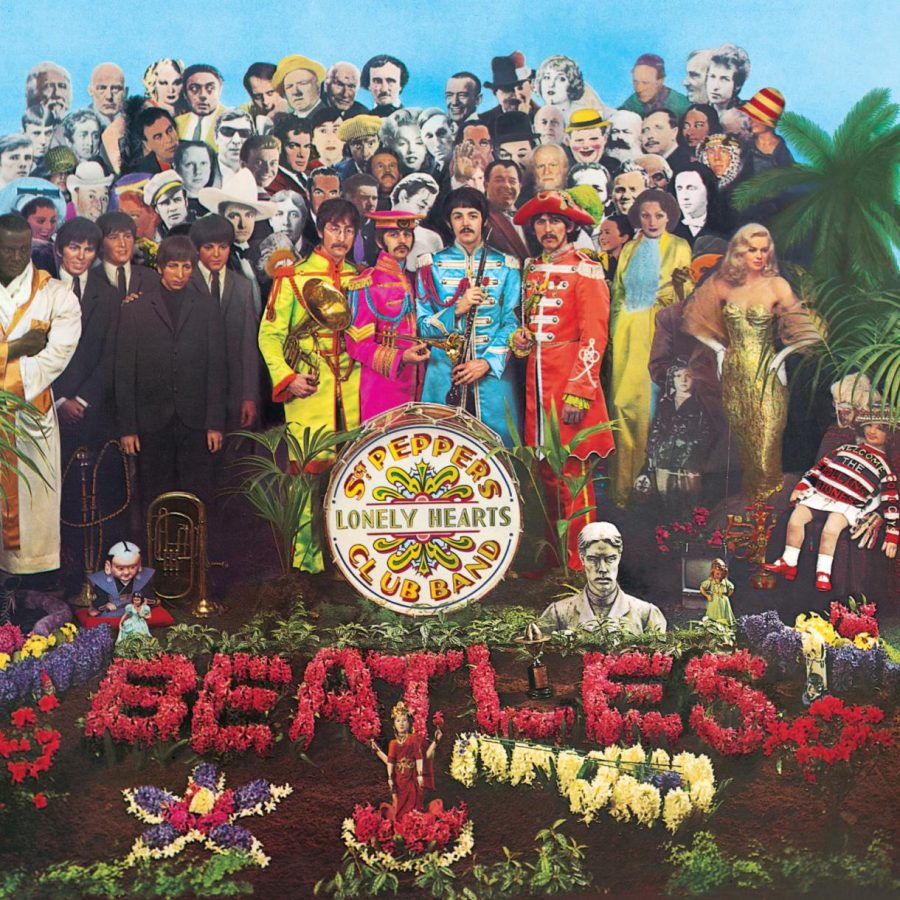
The album stayed 27 weeks at No. 1 in the UK charts, while in the US it was 15 weeks. That only speaks for itself on the success of the record. It is till date one of the best-selling records ever, with a current total of 32 million sales.
With this album, the Beatles managed to read the mood of an entire generation: hallucinogenic drugs, nostalgia mixed with optimism, a new vision of the world. Take for examples songs like “Lucy in the Sky with Diamonds,” or “With a Little Help from my Friends.” It’s kind of a kaleidoscopic view on different aspects of life for the average twenty-something of the time.
Of course, it caused many polemics among the more conservative public, and that’s part of its charm and why it is so historically relevant.
50 years later, the album is getting an incredible reissue
To celebrate the 50th anniversary of the groundbreaking album, EMI studios will be releasing what may be every Beatle fan dream came true: the album, remixed and remastered. The reissues of ‘Sgt. Pepper’s Lonely Hearts Club Band’ will come in several packages.
For the die-hard fans, there is a super deluxe six-disc box set, including a DVD and a Blu-Ray of ‘The Making of Sgt. Pepper, 2 CDs of alternate takes, the stereo version and the mono version of the album. A 144-page hardcover book is also included, with an introduction from Paul McCartney and producer Giles Martin, and an overview of every facet of ‘Sgt. Pepper.’
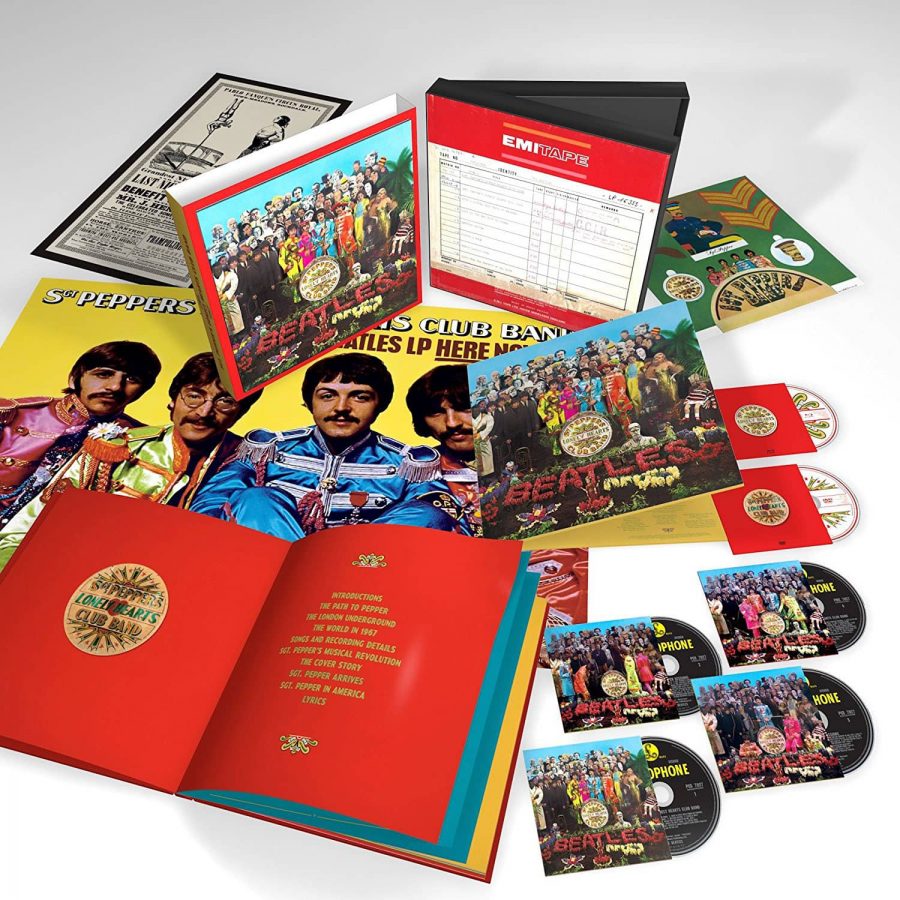
You can also get simpler versions, with two or only one CD of a new stereo mix of the album.
Long live Sgt. Pepper!



Loading…